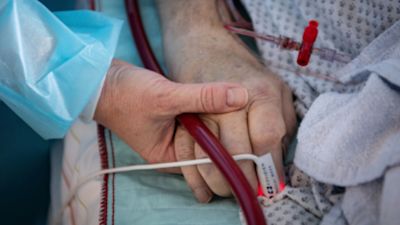Could the length of a person’s fingers provide a clue to how ill they might get from Covid-19?

Researchers at Swansea University have suggested that the length of a person’s fingers could provide clues to how ill they might get after contracting Covid.
It is hoped that their recent findings may help identify who is most likely to be hospitalised with Covid to ensure they are targeted with vaccinations.
Although most people who contract Covid only experience mild symptoms, those patients who end up needing hospital care often vary depending on age and gender. For example, men and older people tend to experience Covid at a higher severity than younger people or women.
This led Professor John Manning of Swansea University to work with fellow researchers in Poland and Sweden to explore the link between levels of sex hormones in the womb and in puberty and Covid hospitalisations.
One of the ways scientists have explored this is through examining the length of a person's finger as predictors of severity of Covid symptoms.
A longer ring finger, which is generally attributed to men, can be a marker of higher levels of testosterone prenatally, whereas a longer index finger, which is generally possessed by women, is a marker of higher levels of oestrogen.
Researchers examined patients' digit ratios and found that patients with “feminised” short little fingers relative to their other digits tend to experience more severe Covid symptoms leading to hospitalisation, and patients with a large right hand-left hand differences in ratios have significantly higher chance of hospitalisation from Covid.
Face masks in shops and self-isolation rules scrapped from 28 March as Wales Covid rules eased
Caerphilly village to host Wales' third commemorative woodland for lives lost in Covid pandemic
Professor Manning said: “Our findings suggest that Covid-19 severity is related to low testosterone and possibly high oestrogen in both men and women.
“’Feminized’ differences in digit ratios in hospitalised patients supports the view that individuals who have experienced low testosterone and/or high oestrogen are prone to severe expression of Covid-19. This may explain why the most at-risk group is elderly males."
He added, “Our research is helping to add to understanding of Covid-19 and may bring us closer to improving the repertoire of anti-viral drugs, helping to shorten hospital stays and reduce mortality rates.”
“The sample is small but ongoing work has increased the sample. We hope to report further results shortly.”